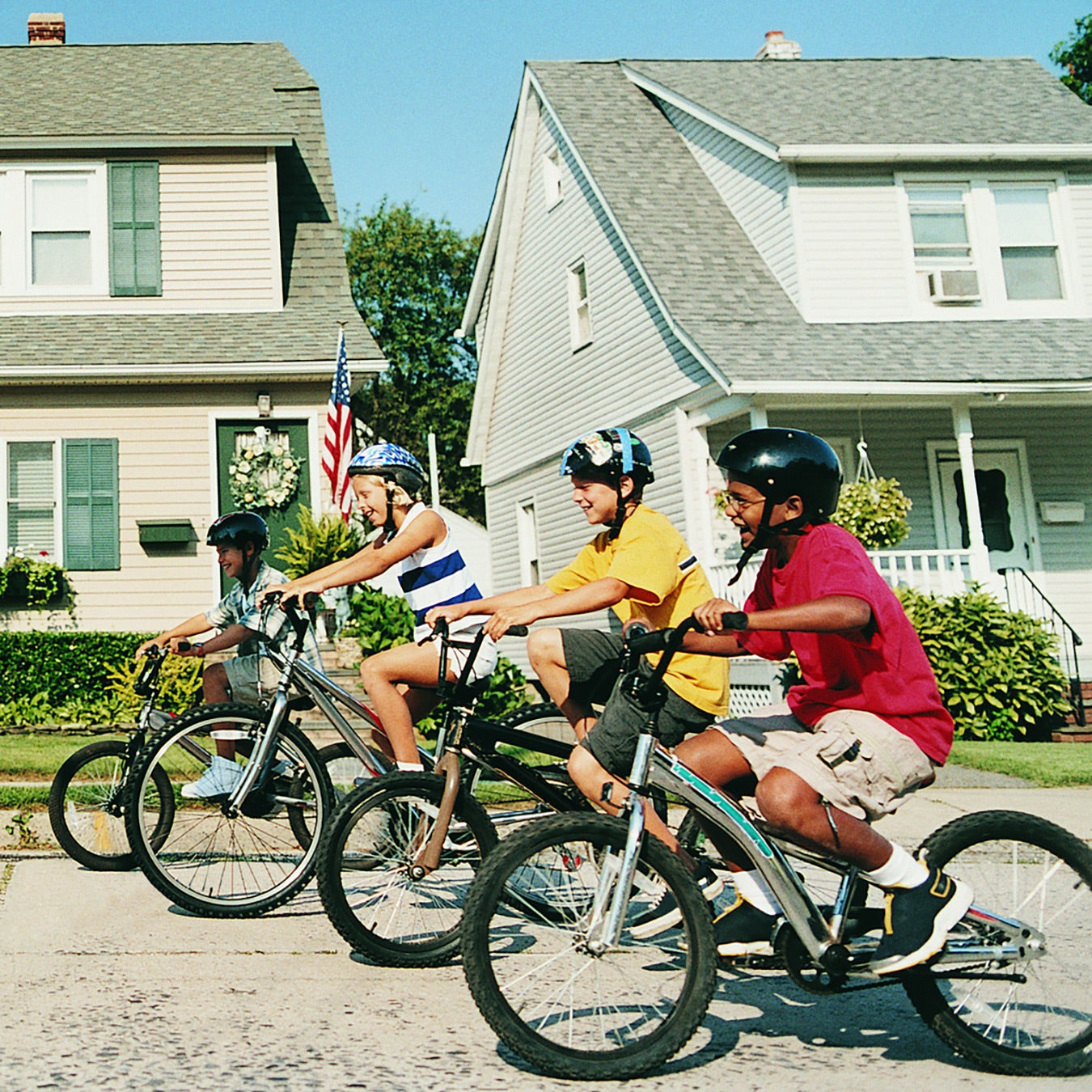Welcome to 2023! In case you’re just joining us, everything’s bad now. Whether or not you buy into the notion that there’s such a thing as “cancel culture,” there’s no denying all sorts of stuff we once thought was wholesome is now considered dangerous and evil. When I was a kid, meat was supposed to make you big and strong; now it’s destroying the planet and you’re supposed to . And forget about peanut butter and jelly sandwiches–send your kid to school with one of those today and you’re likely to send half the class into anaphylaxis.
Another formerly wholesome idea that’s taken a big hit these days is suburban living. For at least a century, having your own home on a modest plot of land was a perfectly reasonable aspiration. Kids playing in the yard, a barbecue grill, watering the begonias, changing your motor oil in the driveway. These things once smacked of the good life. Now, they’re synonymous with vapidity, intellectual stultification, homogeneity, sub-optimal land use, sprawl, car dependence, and of course climate change–unless you’re grilling cricket burgers. I know this because people are constantly Bikes and bike advocacy are very much a part of this suburban antipathy, too: cities are good because they’re bike-friendly, whereas ‘burb are bad because they’re car-centric.
I’m not particularly interested in living in the suburbs; I live in New York City, and I’ll most likely die in it–possibly as soon as tomorrow when a driver takes me out in one of our “protected” bike lanes. (Really though, I do love it here.) However, even though I’m a confirmed city dweller, I cringe a little bit every time I come across more . This is partly because it smacks of the sort of tiresome elitism we urban types so redolently exude, it’s also at odds with my actual experience as a child, and as a parent, and as a person who lives for riding bicycles.
To be sure, there are suburban areas that are essentially purpose-built to kill cyclists. (Well, technically they’re built to move as many cars as possible to and from large shopping centers, but it’s basically the same thing.) This can mean children must rely on their parents to drive them everywhere, until they themselves learn to drive and the cycle begins anew. In places like these, people may ride bicycles for pleasure in parks and on multi-use bike paths, but riding for transportation may be virtually nonexistent, and of course it’s the that carries the most currency among our advocates and cultural critics.
But city dwellers who want to ride bikes face their own challenges, and they go far beyond the dangers posed by drivers. Even in a city with robust bike infrastructure, there’s the simple issue of space—you need a place to keep your bike, plus all the accessories that go with it. (Even the most casual rider needs a pump.) And even if you do have such a space, accessing your bike may or may not be a straightforward proposition. Do you need to carry your bike up and down a flight of stairs? Is it in a basement bike room? Is it locked up outside where the elements are slowly degrading it or thieves are preying upon it?
Urbanists hate sprawl and love density, but an urban lifestyle can make bicycle ownership difficult enough that the less dedicated may simply choose to forego it. Sure, a dyed-in-the-Lycra roadie will happily keep their bike in the bedroom and wash it in the bathtub and clomp up and down the stairs in cleats, but the average person who just wants to get from (Avenue) A to (Avenue) B will rightly conclude, “Why schlep this thing down three flights when I can just take the bus?”
Certainly in a city with a robust bike share program you might be able to ride regularly without actually owning a bike, but kids can’t use bike share, and the bigger your familial unit is the more exponentially difficult urban bicycle ownership becomes. While a suburban family of four may have the luxury of sticking their bikes in the garage or shed and forgetting about them, their urban counterparts may not be able to keep four bikes anywhere without falling over them, and so they may not even bother in the first place. And while a suburban kid may be relegated to pedaling up and down the driveway or in the cul-de-sac, a city kid may not even be able to get to their bike at all unless a parent retrieves it from a locked bike room.
From there they may have to go into an elevator, through a lobby, and into a vestibule with a heavy pair of doors before they even see the light of day, which could be just enough of a hassle for even a well-meaning parent to say, “I’m too busy right now, can we do this later?” And by the time “later” rolls around the kid’s liable to have moved on to something else. It’s easy and frequent access to the bike that makes kids comfortable and proficient on them, and all the bike lanes in the world can’t make up for that.
In my own formative bicycling years, though we technically lived inside the city limits, our neighborhood was essentially suburban and we lived in a single-family home, so when I wanted to ride my bike it was a grab-and-go proposition. Kids roamed the neighborhood by bike and in packs, and as I got older I raced BMX–a thoroughly suburban phenomenon that gave me a strong cycling foundation. Meanwhile, as a parent in an apartment building, if my kids want to ride I need to go into bike valet mode and retrieve everything for them. (Well, my older son is self-sufficient in that regard, but only because I put in all that valet time when he was younger.) I’ve seen lots and lots of kids’ bikes bought with the best intentions that go undridden, and I’ve met plenty of parents who grew up in the denser parts of the city and cited their urban upbringing as the main reason they never learned to ride.
Certainly there are plenty of variables at work here. For example, I was fortunate enough to grow up in the days before supervising your children was fashionable, and I could come and go as I pleased. Also, a parent who loves to ride is going to find a way for their kids to do it no matter where they live, and a kid who loves to ride is eventually going to figure out how to do it no matter what. Ultimately, people are who they are. Some city kids grow up, buy houses, and become suburban NIMBYs; some suburban kids grow up, move to the city, and become insufferable urbanists. Then their own kids grow up and do the opposite of whatever they did. It’s the cycle of life.
No doubt there are places in this country where the motor vehicle has run amok, city and suburb alike. Increasing awareness of this is what’s driving (pun intended) the growing trend towards and other types of zoning reform. And who knows? Maybe ultimately all this will lead to urban housing that makes it much easier to keep and ride a bike. At the same time, in the discourse surrounding all of this there’s often an , and of , and a belief in the moral and cultural superiority of the city, even as the and diverse, and despite the fact that, well, people . And implying people are wrong or stupid for wanting the things they do seems like a really bad way to get them on your side.
The grass may not necessarily be greener in the suburbs, but at least you have some, and for some people that can count for a lot.


